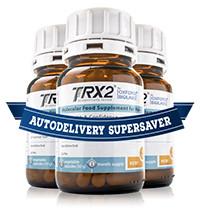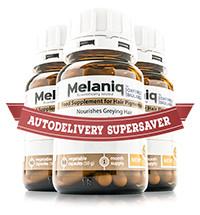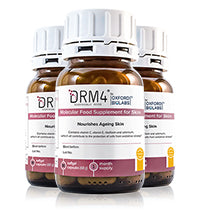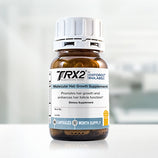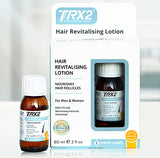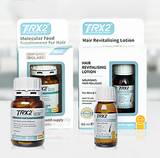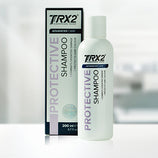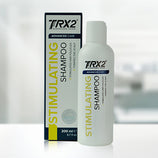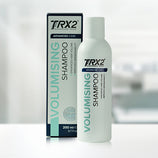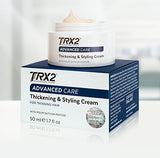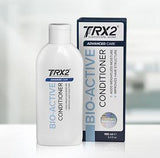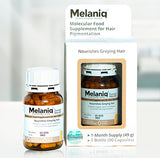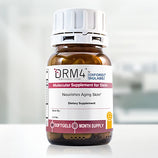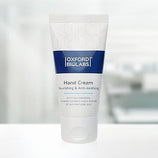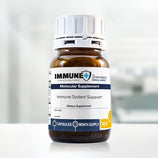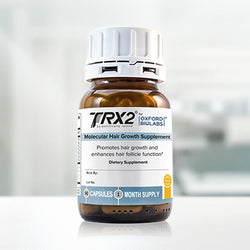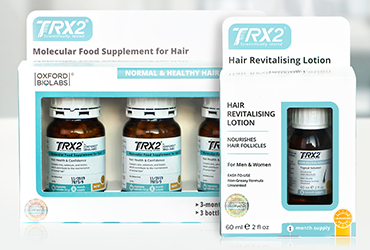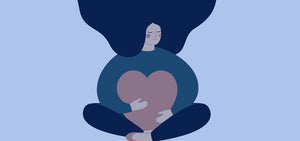Can seborrheic dermatitis cause hair to fall out?
Seborrheic dermatitis and its milder form, dandruff, affect about 50% of the adult population. Seborrheic dermatitis sounds like a very scary disease. In reality, it’s fairly common. Symptoms include red, itchy, oily, and scaly skin. However, for such a common disease, the causes are not well understood. While it’s benign, apart from possible psychological damage and detriment to quality of life, this skin disorder may cause or make hair loss worse. If one is experiencing hair loss and an itchy, inflamed scalp, preventing and treating seborrheic dermatitis may be the key to a better life.
What is seborrheic dermatitis?
It’s a skin disorder that’s also known as dandruff, seborrheic eczema, or seborrhea. Essentially, it’s a chronic inflammation of the skin that causes:
- Red, inflamed skin
- Itchy skin
- Oily skin
- Scaly/Flaky skin
Like the herpes virus that causes cold sores, seborrheic dermatitis is a recurring condition. It occurs in areas with high concentrations of sebaceous glands (scalp, face, chest). Symptoms may be evident on multiple sites.
The milder manifestation of seborrheic dermatitis, dandruff, is well-known and recognised because of dandruff shampoo commercials and unfortunate experiences with white particles on dark clothing. Dandruff is considered a non-inflammatory form of seborrheic dermatitis and generally affects people during the first three months of life, during puberty, and in adulthood. The age/sex group that suffers the most is 40-60 year old men. Because medical record analyses have shown that dandruff is more common in men, there are theories that the condition is connected with male hormones.
What causes seborrheic dermatitis?
The exact cause of seborrheic dermatitis is not known. Through methods of observation over the years, it seems to be caused by multiple factors.
The main causes of this skin disease include:
- Fungal infection
- Overproduction of sebum
- Improper immune response
- Vitamin or mineral deficiency
The fungus Malassezia is believed to cause this debilitating disorder because it thrives in the oily environment of skin. Modern medical studies are contradicting; in some studies there are elevated levels of the yeast, while in others they are lower than expected. Researchers posit out that this can be explained by the fact that the yeast can also live within the layers of the skin, making surface examination ineffective.
The fungal nature of the disease is also highlighted by studies on HIV/AIDS patients, who have a much higher prevalence of seborrheic dermatitis. A weakened or compromised immune system is less likely to cope with higher concentrations of yeast, and therefore oily patches of itchy skin are typical.
Nutrient deficiencies also cause seborrheic symptoms. The most common vitamin deficiencies that cause skin problems are: Vitamin A and B Vitamins (B2, B3, B6, B7, and B12). Interestingly a lack of Vitamin B7 (Biotin) also leads to seborrheic-like dermatitis. And as the medical community has recently learned, Biotin deficiency may be more common than previously thought. In a Swiss study, researchers found that of the women complaining of hair loss, 38% were deficient in Biotin, and more than a third showed signs of itchy, inflamed skin.

Seborrheic dermatitis and hair loss
As described above, the link between skin symptoms and a lack of Biotin has been established. But what about seborrheic dermatitis that is not nutrient related? Can this also lead to hair loss?
Skin inflammation on the scalp does not specifically hurt the hair follicles, but inflammatory factors can make an affected area of the scalp difficult for hair to grow. A combination of hair loss risk factors and seborrheic dermatitis also logically increases the likelihood of more severe hair shedding.
Can seborrheic dermatitis be treated?
Seborrheic dermatitis is treatable, but since it’s a chronic, recurring disorder, it may rear its ugly head when a person is stressed, experiencing fatigue, or has a weakened immune system from an unrelated illness.
Doctors normally prescribe anti-fungal medications, creams, and shampoos containing either selenium sulfide or pyrithione zinc. Steroidal drugs and cosmetic products can also be prescribed. Natural remedies include coal tar and tea tree oil. If a nutrient deficiency is suspected, a 100% natural food supplement or multivitamin is suggested, but should not replace a proper, varied diet.
Going outside on a sunny day can also improve symptoms of seborrheic dermatitis. A study on the effect of UV rays on yeast demonstrated a positive effect on reducing yeast levels, and therefore may play an additional role in fighting the psychologically impacting skin disorder.
